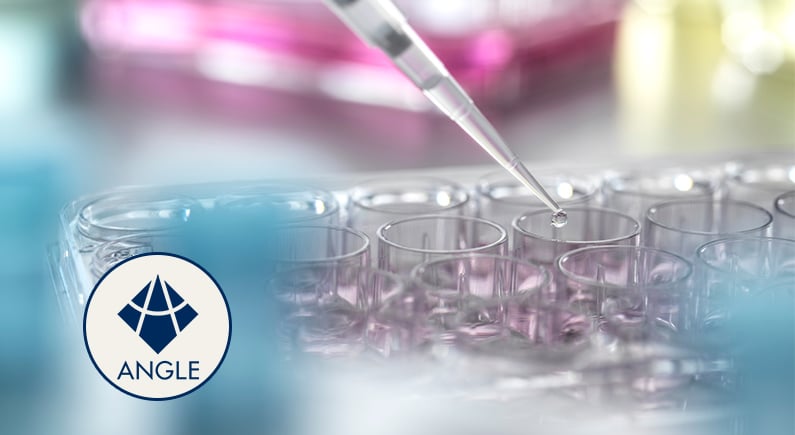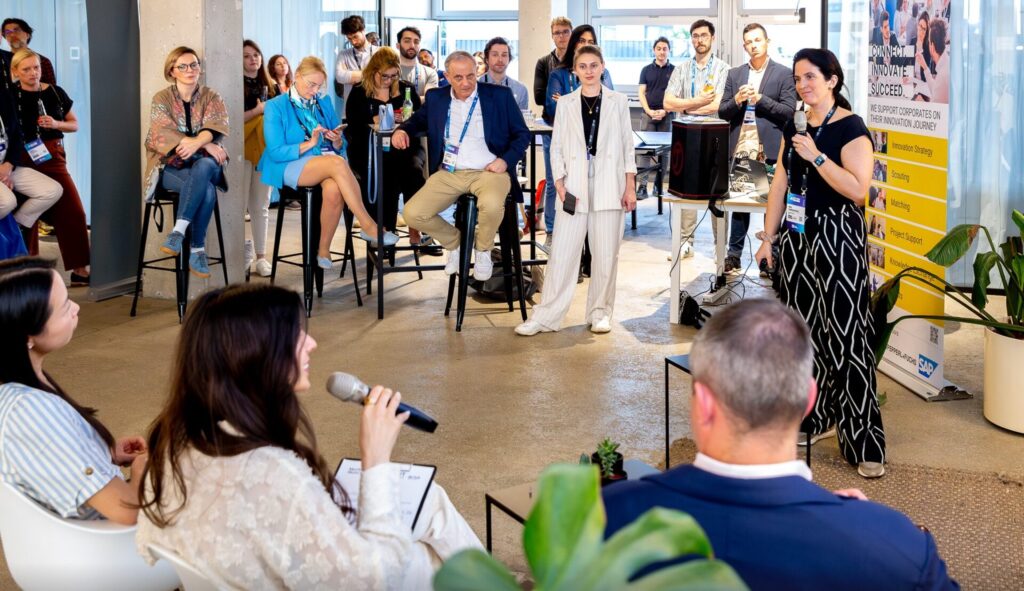
Michael Joe Cini
28th April 2023
ANGLE study reveals potential utility for Parsortix System in cancer treatment
Harvesting tumour cells has been the traditional forte of ANGLE. This UK-based biotechnology company is focused on providing liquid biopsies for diagnostic purposes. Its patented Parsortix system is one of the world’s leading biopsy solutions for obtaining tumour cell samples from blood. A new study shows that ANGLE’s technology may successfully identify different cancer cell types. ANGLE’s unique technology has the potential to help doctors make better treatment decisions for cancer patients.
ANGLE Plc: Taking giant strides to solve a metastatic problem
ANGLE Plc is taking on a liquid biopsy market worth $100 billion by developing a unique product that accelerates the shift towards precision medicine. In 2022, ANGLE Plc became the first company to develop an FDA-cleared cancer-harvesting product. Dr Julie Lang, Chief of Breast Surgery and Co-Director of the Comprehensive Breast Cancer Program at Cleveland Clinic Cancer Center, described how Parsortix had “demonstrated how circulating tumor cells harvested by this system are a good surrogate for tissue biopsies of the metastatic site. With this regulatory clearance, we can now obtain repeat biopsies periodically to provide up-to-date information to guide treatment decisions, improving care and minimising invasive procedures for these patients.”

With a simple blood draw, the system can provide intact cancer cells that standard laboratory techniques can readily analyse. Previous analyses were limited to circulating tumour DNA obtained from blood, but the Parsortix PC1 Clinical System provides an avenue to directly analyse circulating tumour cells, allowing lab scientists to perform a full range of analyses. CTCs can eventually become a feasible alternative to tissue biopsies in metastatic cancers. As the ability to harvest and analyse circulating tumour cells (CTCs) improves, personalised cancer care through the power of Parsotix technology will become more accessible.
ANGLE Plc first unveiled the study highlighting this potential use of their technology at the American Association for Cancer Research (AACR) annual meeting—the 2023 annual meeting held in Orlando, Florida, between the 14th and 19th April 2023.
In a detailed poster presentation, ANGLE Plc presented a new study demonstrating the feasibility of combining IF (immunofluorescent) staining for epithelial, mesenchymal, and epithelial-mesenchymal tumour cells with HER2 fluorescence in-situ hybridisation (her2-fish) staining for assessment of samples processed using the Parsortix system.
The Parsortix C1 system is already cutting-edge at harvesting CTCs (circulating tumour cells) from the bloodstream of cancer patients. The researchers used the system to isolate these CTCs from the bloodstream of the study subjects before analysing the samples. In the subsequent tests to characterise the CTCs’ cellular expressions, the researchers combined high-sensitivity and high-specificity methods to maximise relevant information on HER2 expression.
Previous studies, such as a 2022 study published in the journal Cancers have already demonstrated the efficacy of Parsortix’s PC1 system in harvesting and characterising circulating tumour cells from patients with metastatic cancers. In this multi-centre clinical trial with over 400 participants, cells were harvested from a blood sample provided by each participant and subjected to further evaluation and analysis. qRT-PCR, RNA sequencing, and cytogenetic analysis of HER2 amplification by FISH (fluorescence in-situ hybridisation) were conducted, demonstrating the potential of Parsortix to capture and harvest CTCs effectively.
The HER2 FISH assay has already been demonstrated to be effective for analysing cell samples, and it is commercially available to clinicians. ANGLE’s new study checked the efficacy of combining the IF and FISH staining analysis, comparing it to the HER2 FISH assay. From the study results, the percentage recovery of cancer cells with combined IF and FISH staining was comparable to that achieved with the HER2 FISH assay alone. This demonstrates to researchers that IF and FISH staining analysis could be combined to maximise relevant information on HER2 expression.
Parsortix’s PC1 system for harvesting circulating tumour cells is an innovative breakthrough in itself. True to their innovative culture, the team at ANGLE Plc has strived to find other downstream uses to make the product more attractive to researchers and clinicians.
This new finding highlights another downstream utility for ANGLE Plc’s latest technology. Andrew Newland, ANGLE’s Founder and CEO, said, “Development of the Portrait Flex IF assay is part of ANGLE’s programme to develop ‘content’ for Parsortix in the form of downstream applications using the Parsortix harvested cancer cells.” HER2 status in breast cancer can change over time. Parsortix’s CTC-based HER2 assay can help meet an unmet medical need in monitoring disease progression. Rather than utilising tests developed for fixed tissue, this assay can aid the longitudinal monitoring of patients during disease progression.
Tackling cancer through innovation: a long-pursued dream
Cancer is one of the most common non-communicable diseases in the UK and the US, responsible for 9.3 million deaths annually, according to the WHO. It is the second most common cause of death due to NCDs, second only to cardiovascular diseases, and more lethal than chronic respiratory diseases and diabetes. The condition occurs when abnormal cells divide uncontrollably and begin to infiltrate and destroy normal body tissue.
Cancers occur due to changes in the DNA of cells. DNA composes genes, which are instructions that control genetic expression (how cells behave, the proteins they produce, and how to grow and divide). Cancerous cells can be recognised by the fact that they synthesise proteins that differentiate them from cells or sometimes make normal proteins in excess.
Patients with breast cancer have typically been classified into HER2 positive and negative groups, with elevated HER2 levels in patients with circulating tumour cells. Circulating tumour cells have long been recognised as an accurate marker in breast cancers. However, a lack of accurate predictive molecular information limited the utility of this knowledge.
Massimo Cristofanilli, a recognised leader in liquid biopsies, commented: “Circulating tumour cells (CTCs) have long been recognised as a robust prognostic marker in metastatic breast cancer but its clinical application has been limited by the lack of predictive molecular information. MBC is a heterogenous disease that requires targeted and biological therapies and diagnostic monitoring of the natural molecular evolution of the disease to be able to longitudinally identify and implement the most effective treatment and measure its benefit.”
Attend the Med-Tech World Roadshow!
Join us in London for a game-changing night of networking, learning, and innovation in digital health and med-tech. Don’t miss this exciting opportunity to collaborate and discuss how we can shape the future of healthcare.






